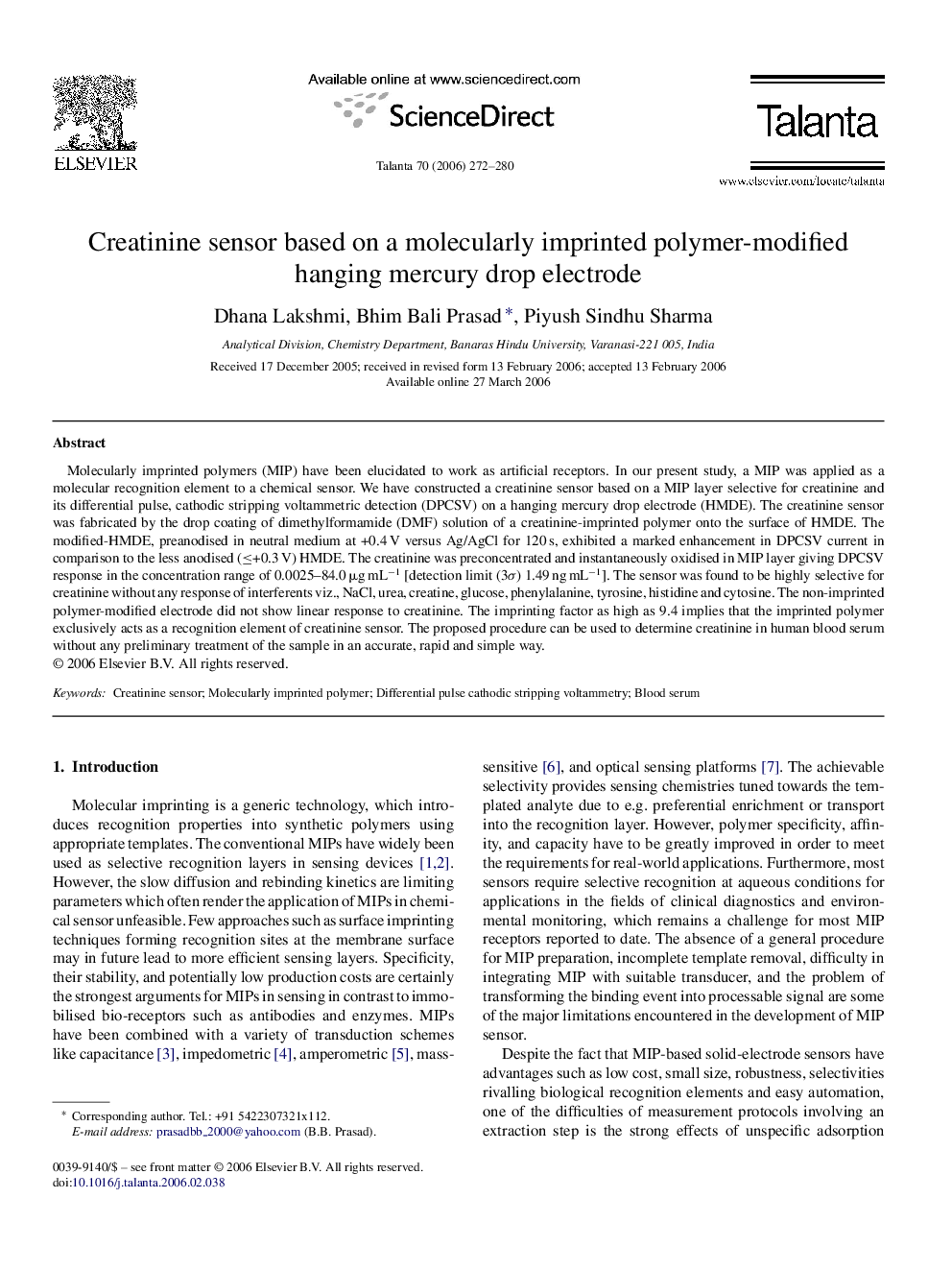| Article ID | Journal | Published Year | Pages | File Type |
|---|---|---|---|---|
| 1246451 | Talanta | 2006 | 9 Pages |
Molecularly imprinted polymers (MIP) have been elucidated to work as artificial receptors. In our present study, a MIP was applied as a molecular recognition element to a chemical sensor. We have constructed a creatinine sensor based on a MIP layer selective for creatinine and its differential pulse, cathodic stripping voltammetric detection (DPCSV) on a hanging mercury drop electrode (HMDE). The creatinine sensor was fabricated by the drop coating of dimethylformamide (DMF) solution of a creatinine-imprinted polymer onto the surface of HMDE. The modified-HMDE, preanodised in neutral medium at +0.4 V versus Ag/AgCl for 120 s, exhibited a marked enhancement in DPCSV current in comparison to the less anodised (≤+0.3 V) HMDE. The creatinine was preconcentrated and instantaneously oxidised in MIP layer giving DPCSV response in the concentration range of 0.0025–84.0 μg mL−1 [detection limit (3σ) 1.49 ng mL−1]. The sensor was found to be highly selective for creatinine without any response of interferents viz., NaCl, urea, creatine, glucose, phenylalanine, tyrosine, histidine and cytosine. The non-imprinted polymer-modified electrode did not show linear response to creatinine. The imprinting factor as high as 9.4 implies that the imprinted polymer exclusively acts as a recognition element of creatinine sensor. The proposed procedure can be used to determine creatinine in human blood serum without any preliminary treatment of the sample in an accurate, rapid and simple way.
